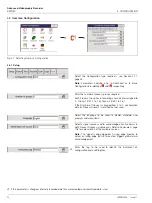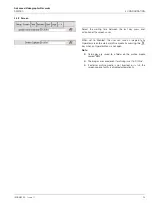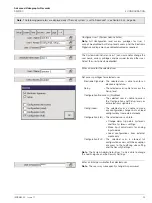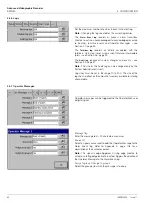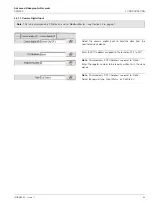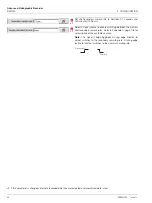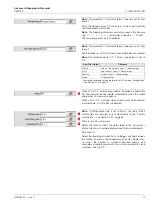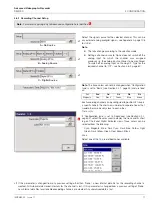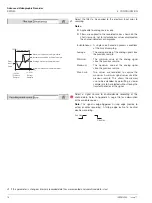
Advanced Videographic Recorder
SM2000
4 CONFIGURATION
IM/SM2000
Issue 11
65
When 'Configuration type' is set to 'Basic' (see Section 4.4.1, page 52), the instrument can be configured to sample all recording
channels in the group simultaneously and store the data in internal memory and external archive media (if archiving is enabled) at two
rates, Primary and Secondary.
The Primary sample rate is active during normal process operating conditions and is set typically to a relatively slow rate (depending
upon process recording requirements) in order to maximize internal memory and external archive media capacity.
The instrument can be configured to switch to a faster, Secondary sample rate when a selected digital source becomes active in
order to record the maximum amount of detail for the period in which that source is active, or may be switched manually – see
Section 3.3, page 31.
Set the Primary sample rate to between 0.1 seconds and 720
minutes (12 hours). The table below compares example sample
rates with the equivalent chart speeds of a traditional chart
recorder together with the storage capacity of internal memory.
Refer to Appendix C, page 120 for full details of internal memory
and external archive media storage capacity.
Sample Rate
Equivalent Chart
Speed
On-board Storage
Time (6 Channels)
1 second
720mm/h
22.7 hours
3 seconds
240mm/h
2.8 days
6 seconds
120mm/h
5.7 days
12 seconds
60mm/h
11.5 days
36 seconds
20mm/h
1.1 months
72 seconds
10mm/h
2.3 months
Note.
Sample rates are set using one of the following
combinations of units:
–
Minutes or minutes and seconds
–
Seconds
–
Tenths of seconds (
minutes and seconds must first
be set to zero
).
The rate at which data is displayed in the Chart Views is
set separately – see 'Screen interval' in Section 4.5.2,
page 69.
If 'Configuration type' is set to 'Basic' (see Section 4.4.1,
page 52), the fastest sample rate setting determines the
maximum screen interval that can be selected – see
Table 2.1 on page 12.
•1
If this parameter is changed, internally recorded data files are recreated and unarchived data is lost.
1
B


